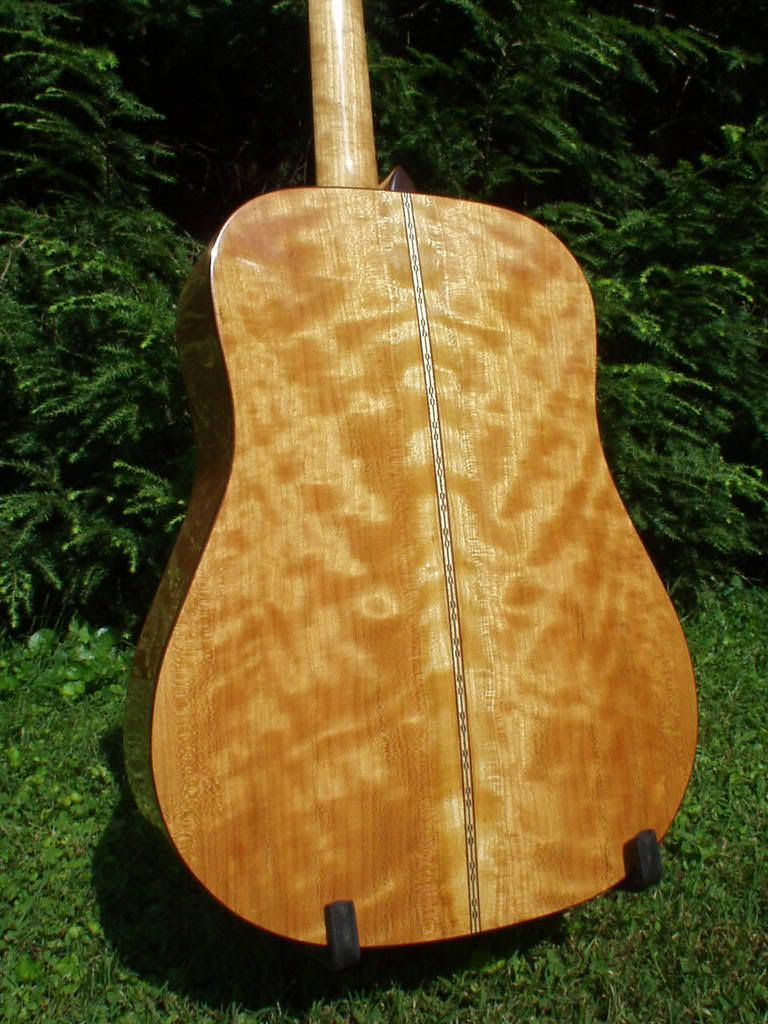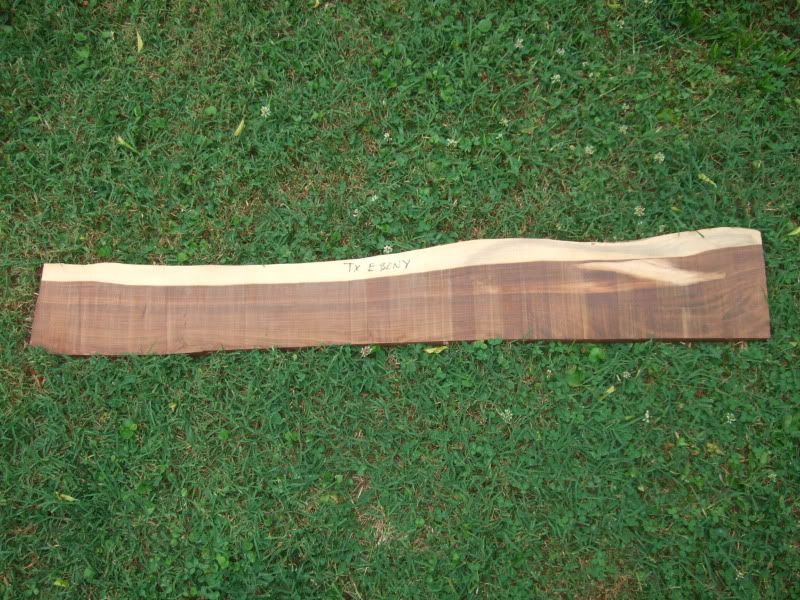
 |
|
#1
|
|||
|
|||
|
Is it possible to build a guitar entirely from north american lumber that would sound as good as, say, one built from BRW with an adi top? What would one use for the back and sides? Soundboard? Neck, fingerboard and bridge? Surely there should be some combination that would result in such a guitar. Any thoughts?
|
|
#2
|
|||
|
|||
|
Great question. Simon and Patrick, made in Quebec, are made from 95% Canadian wood. The fretboard is Indian Rosewood though.
I wonder what North American options there are for fretboards. |
|
#3
|
|||
|
|||
|
I was thinking persimmon. It's the closest thing to an ebony that grows in north america. I was also thinking it may work for the b&s but it doesn't seem to be readily available. If it were, might it sound similar to maccassar?
|
|
#4
|
|||
|
|||
|
Quote:
"The only native American ebony and,, as such, it polishes well. Has been used on fretboards and bridges". |
|
#5
|
|||
|
|||
|
Quote:
__________________
~Dave ~Music self-played is happiness self-made |
|
#6
|
|||
|
|||
|
I have no problem using a wood from outside North America for the fretboard, otherwise it is not hard to build a guitar with homegrown wood. Will it sound like BRW? Maybe not, can it sound good, sure why not?
I just picked up some cherry and walnut for the next couple of guitars once I get the current ones done. I have some nice spruce and cedar tops from British Columbia that I am going to use with the walnut and cherry. |
|
#7
|
|||
|
|||
|
I'll take adi top, osage orange back/sides, cherry neck, mesquite fingerboard and bridge.
Though cocobolo does grow in North America, and could be used for the back/sides/fingerboard/bridge. |
|
#8
|
|||
|
|||
|
Hah! You are correct, sir. I forgot that Mexico is indeed part of North America. That would certainly broaden the options, wouldn't it.
|
|
#9
|
||||
|
||||
|
Quote:
For the fretboard, one could use maple. Fender does it.
__________________
Fazool "The wand chooses the wizard, Mr. Potter" Taylor GC7, GA3-12, SB2-C, SB2-Cp...... Ibanez AVC-11MHx , AC-240 |
|
#10
|
|||
|
|||
|
Fender made their necks out of a single billet of maple, meaning the fretboard is integral to the neck. Fender also lacquered the entire neck, including fretboard. This would wear from play, and most all have seen Strats and Teles with wear spots. Kind of looks cool on them, on an acoustic maybe not so much.
|
|
#11
|
||||
|
||||
|
I had a Gibson torrefied maple fretboard that was fantastic
__________________
Fazool "The wand chooses the wizard, Mr. Potter" Taylor GC7, GA3-12, SB2-C, SB2-Cp...... Ibanez AVC-11MHx , AC-240 |
|
#12
|
|||
|
|||
|
I have done it, using dyed persimmon for the fingerboard and osage orange for the bridge. That guitar had cherry back, sides, and neck, red spruce top and bracing, and sassafras end blocks and kerfing.
This guitar is not 100% domestic, but it does have cherry from a nearby storm-damaged tree that I cut.  Osage orange is probably the closest domestic wood to the sound of Brazilian RW, but I have built two guitars with black locust backs that sounded just great. I rate those guitars as good or better than any I have made from mahogany or Brazilian RW. The best fingerboard and bridge wood I have cut is not persimmon, but Texas ebony, a legume from the southern tip of Texas and northeastern Mexico. Unlike persimmon, it is dark in color, and similar in hardness and density to true ebony. Though persimmon is in the ebony family, it is primarily light-colored sapwood, which is not as hard or as dense as black ebony. Another viable choice for bridges and fingerboards is desert ironwood. Here is a nice quartered Texas ebony board that is about 40" long and 4" to 5" wide.  
Last edited by John Arnold; 08-28-2014 at 10:57 PM. |
|
#13
|
|||
|
|||
|
There was a good thread on the UMGF of tonewoods from USA/Canada
http://theunofficialmartinguitarforu...nada-Ha?page=1 |
|
#14
|
|||
|
|||
|
Nice guitar JA I love the mottled look of cherry.
--- I built this guitar from materials found about 100 ft behind my house. The planks of an old barn were oak and pine and no doubt were cut locally in the hills of Virginia where I lived at the time. I don't know what kind of pine the top is made of but the rest of it is white oak. I could have used the pine for bracing however I chose to use Sitka so it's not 100% local but it easily could have been. As for whether it sounds as good as a high end guitar made with exotics? I think so and you can judge for yourself: https://www.youtube.com/watch?v=ctm3nBTKUyU The fretboard and bridge is oak died black with a vinegar solution.  The same solution was used to give it that burst like affect.  So imho the answer is yes you can build a nice guitar from domestic or locally sourced materials. Wood like BRW is beautiful no doubt and may actually contribute to the tone of a guitar but it's just wrapped in tradition, myth, legend and so on. The top is what drives the tone and again imo is the important factor and any of the coniferae can be used to give that traditional tone. A hardwood top is going to be very different, so are the different species of pines and spruces, but they all at least sound like the guitars we are familiar with. |
|
#15
|
|||
|
|||
|
Quote:
|